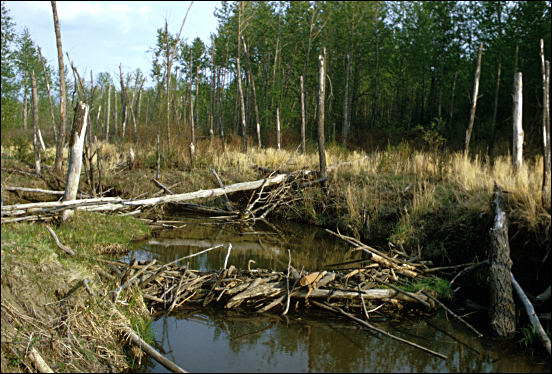

Beavers are renowned for their ability to make dams. That's not something that they usually do in the lowlands of the Chihuahuan Desert, where permanent water tends to be in the form of relatively broad rivers. In the higher mountains of the desert region, though, permanent streams are small, and dams work out well. The trouble with streams, from a Beaver's point of view, is that they're mostly too shallow. Water is the Beaver's protection from predators, but it has to be deep enough to permanently cover the entrance to the living quarters. The Beaver pond serves another function; where the climate is cold enough to form ice, stored food in the form of sticks stuck into the bottom mud allows recovery and feeding within the lodge during the depth of winter, when rapid retreat into water while foraging would be impossible.
Abandoned ponds break into the forest cover, encouraging a diversity of
plant growth, to say nothing of providing pools for trout. From our point of view,
it's well worth keeping the dam builders around!

Contributor: Arthur H. Harris, Laboratory for Environmental Biology, Centennial Museum, University of Texas at El Paso.
Desert Diary is a joint production of the Centennial Museum and KTEP National Public Radio at the University of Texas at El Paso.

A beaver dam. Photograph by Luther C. Goldman, courtesy of the U.S. Fish and Wildlife Service.